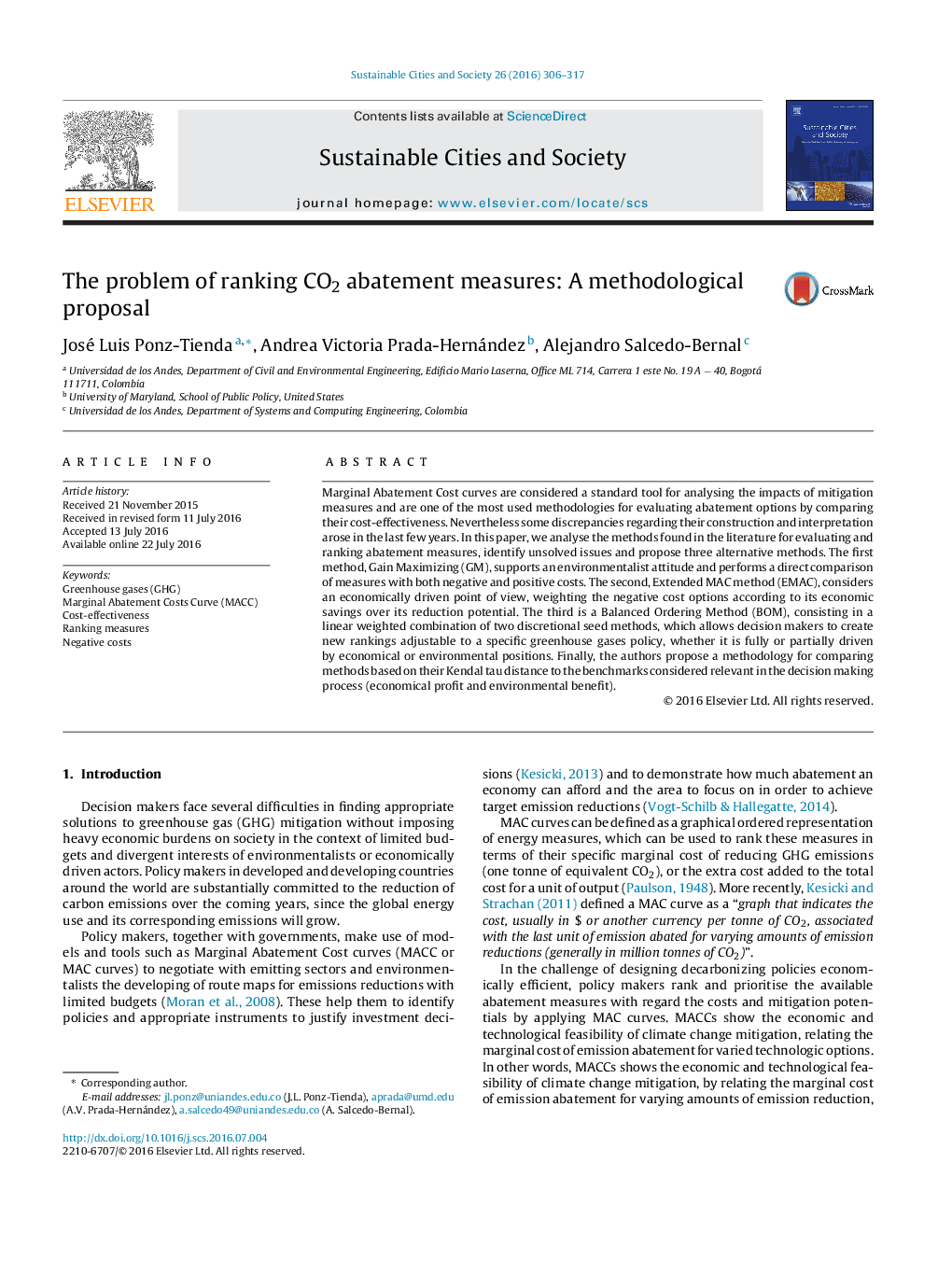| Article ID | Journal | Published Year | Pages | File Type |
|---|---|---|---|---|
| 308038 | Sustainable Cities and Society | 2016 | 12 Pages |
Marginal Abatement Cost curves are considered a standard tool for analysing the impacts of mitigation measures and are one of the most used methodologies for evaluating abatement options by comparing their cost-effectiveness. Nevertheless some discrepancies regarding their construction and interpretation arose in the last few years. In this paper, we analyse the methods found in the literature for evaluating and ranking abatement measures, identify unsolved issues and propose three alternative methods. The first method, Gain Maximizing (GM), supports an environmentalist attitude and performs a direct comparison of measures with both negative and positive costs. The second, Extended MAC method (EMAC), considers an economically driven point of view, weighting the negative cost options according to its economic savings over its reduction potential. The third is a Balanced Ordering Method (BOM), consisting in a linear weighted combination of two discretional seed methods, which allows decision makers to create new rankings adjustable to a specific greenhouse gases policy, whether it is fully or partially driven by economical or environmental positions. Finally, the authors propose a methodology for comparing methods based on their Kendal tau distance to the benchmarks considered relevant in the decision making process (economical profit and environmental benefit).
